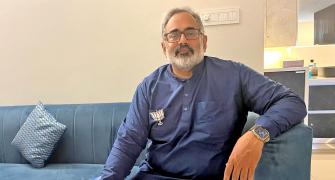Following the global financial turmoil, banks are reworking their strategy. Yes Bank Managing Director & CEO Rana Kapoor tells Sidhartha that the focus is back on branch banking, the bread and butter business, which holds the bank's future strategy. Excerpts:
Current account and savings bank account (Casa) balances account for 9 per cent of your deposit base and your cost of funds is 9 per cent. What is the strategy on this front, as this also affects your prime lending rate (PLR)?
PLR is not indicative of what the interest rates are since a lions share of business is done sub-PLR. In addition, PLR has to be looked at in the context of spreads. In recent months, the spread on loans has gone up and banks will benefit in a falling interest rate scenario.
We will also see better spreads in the short to medium term. We may have a 9 per cent cost of funds but as the yield curve falls, we are in a more advantageous position in dealing with the situation.
To look at the cost of funds alone is not correct. You should also look at the interest margins, which were at 2.9 per cent and we see it improving. Besides, we are only four-and-a-half years old and have a Casa base of Rs 1,200 crore (Rs 12 billion).
Going from 9 per cent to 20 per cent will not be tough given that we now have the infrastructure, relationships and focus to meet the target. Our target is to increase the share of Casa to 14-15 per cent by the end of the year and to 25 per cent of the deposit base by 2012.
Does that mean that you will only be a player to reckon with after you have a higher share of Casa in your deposit base?
With a balance sheet size of Rs 22,000 crore (Rs 220 billion), we are a meaningful player in our home country. Our focus will be more on working capital finance with a high degree of cross-selling potential. It is very important that we get current accounts before we can be successful on savings accounts. Our asset profile is more like 15 months, while are liabilities are around 18 months. So, we have a positive gap on structural liquidity.
Arent working capital loans riskier?
It is important to get into the working capital cycle of a company since you will slowly get into trade finance, forex and cash management. We also do term finance but it is more on the syndication side where we underwrite and sell.
Dont you want to be in the retail space?
We do not have a compelling proposition in retail and I do not see that happening in the next 12-18 months. At the moment there is far more engagement on in the branches. We are a high street bank and well-positioned to cater to small businesses by getting the promoters and the staff salary accounts and fulfilling the needs for small cash requirements from the company.
There has been an eight-fold jump in gross NPAs in the last quarter. Is that a big worry?
We are only 18 quarters old and we have among the best net NPA ratios of 0.33 per cent and gross NPAs of 0.68 per cent. We received only seven proposals for restructuring, of which five have been done. All the restructuring was related to standard assets and not NPAs. The restructuring was due to short-term cash flow problems that the clients were facing.
Of the Rs 85 crore (Rs 850 million) of gross NPAs, Rs 82 crore (Rs 820 million) are to do with three borrowers, while the remaining Rs 2.7 crore is retail loan related. Two of three NPA accounts are pending for restructuring in the corporate debt restructuring mechanism and one of them became an NPA in the year ended March 2008.
Even in these accounts, in some places we have seen cash flows. Once the loans are restructured they will move out of the NPA category. Besides, we have negligible exposure to sectors such as textiles which have seen higher stress.
What about products like derivatives?
In the last 12-18 months, because of the g-local forces, the derivatives market has virtually come to a standstill. With well-developed regulations and accounting standards, the risk appetite for derivatives has been significantly curtailed.
At the same time, there is a good opportunity for foreign exchange flows, for trade flows, options and good interest rate and cross currency contracts, which are more traditional products. We have seen a significant customer shift in that direction during the last three-four quarters.
When are you cutting rates, since earlier you had said you would by 100 basis points by March but you have only reduced your PLR by 50 basis points?
In reality rates have moved down. It is more the bilateral pricing negotiations that are more effective than adjusting pricing downwards, which we have done. Sixty per cent of our portfolio is floating rate, where we have seen a lot of adjustment.
The fixed rate loans, as they mature, are being re-priced at much lower rates. There is a need to reduce rates further and we will take steps to reduce it. It takes a quarter for the books to be reset. With our book, given the short-medium band of the book, July 1 onwards, we should be able to effect further reduction.
How are your plans to set up private equity funds moving forward?
The Clean Energy Fund has seen a commitment of $120 million and by September, the fund will be closed and get into investment mode. We are targeting around $250 million. We were looking at an agri-business fund and there are people working on it but this is not a great time to raise funds.








